In her third attempt, the 70-year-old author completes a solo, non-stop circumnavigation aboard her 38 foot sloop (published July 2015)
In the darkness of the early hours on Monday, July 8, 2013, Nereida drifted across the finish line at Ogden Point, at the entrance to Victoria harbor, British Columbia, having left there on October 22, 2012. This completed nearly 260 days at sea as I sailed around the world solo, nonstop and unassisted via Cape Horn and the Southern Ocean. Under sail and alone, I made no stops for provisioning anywhere, no stops on land and dealt with all the many breakages and repairs on the way without outside help. I had done it…on my third try.

ROUND ONE
My first solo circumnavigation (from Zihuatanejo, Mexico started on March 26, 2007, west-about via Polynesia, Australia, South Africa, Caribbean and the Panama Canal) was not a nonstop attempt. Delayed by unavoidable repairs in Trinidad and a long wait in Colon to transit the canal, I had left Acapulco around sunset on June 18, 2008 for the short final passage to Zihuatanejo. Unfortunately, we ended our journey on June 19, 2008, half a day and 60 miles short of completion, with the loss of the first Nereida (a Najad 361) well before dawn on a steep, deserted surf beach just north of Acapulco. The autopilot remote control unit had lost battery power, putting the autopilot into standby mode as I was taking a short nap, while we motor-sailed over five miles offshore in a near-flat calm.
On that first circumnavigation, I had followed the usually easy cruising route through the tropics, albeit trying to do so within a year or so, to avoid having to stop somewhere for the six-month hurricane season to pass. The voyage that had gone so well ended with the loss of my boat so close to the finish.
ROUND TWO
In my new Nereida (a Najad 380, launched on the Hamble River in April 2009), I finally succeeded in completing a singlehanded circumnavigation when I closed the circle on May 6, 2011 as I approached Cape Town, 14 months after having left there to sail nonstop east to New Zealand’s Cook Strait and on to Kauai.
I’d been forced to stop in Cape Town for rigging repairs in December 2009, 61 days into my first nonstop attempt, which had started on October 10, 2009 from Puerto Calero in Lanzarote in the Canary Islands. Repairs completed, and with an unexpected new engine replacement, I continued on nonstop to Nelson, New Zealand. We met some stormy weather in the Great Australian Bight on the approach to the Bass Strait and then more stormy weather after leaving New Zealand early in June to head north nonstop to Honolulu, Hawaii. I then headed north again, finally making Port Townsend, Washington and British Columbia, Canada in August 2010.
My plan was to make repairs and final preparations in Victoria, B.C. before re-starting my second attempt at a non-stop circumnavigation (and third solo circumnavigation), which I did on October 25, 2010. This time, I had on board a small black box from the World Sailing Speed Record Council, which would validate my attempt.
ROUND THREE
The light wind, strong tides and shipping in the Strait of Juan de Fuca on my first day out were followed by strong southwest winds that made for a slow, rough passage south. I was lucky when negotiating the Intra-tropical Convergence Zone (ITCZ) and managed to avoid the worst of the bad convection by making use of satellite photos of clouds transmitted from Honolulu. On heading south from there, the sailing was often very pleasant with the main problem being the lack of wind at times. The South Pacific High was well west of its usual position so my route had to be less direct towards the Horn than I had expected.
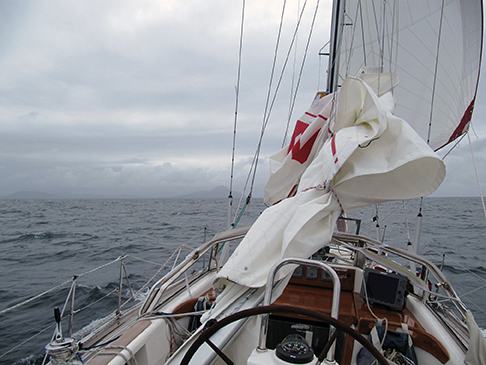
The challenges of sailing earlier in the Southern Ocean—to South Africa and on to Tasmania and New Zealand—turned out to be a useful preparation for my second nonstop attempt. It’s so very much tougher down there and the weather patterns are so totally different from downwind sailing in the tropics. I had hoped to achieve my nonstop goal this second time around, but I was badly knocked down on January 5, 2011, while lying hove-to well west of Cape Horn, waiting for some stormy weather to pass before reaching the continental shelf on which the Cape lies.
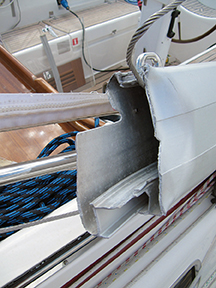
The major damage suffered aboard Nereida included a broken boom, sprayhood torn away, windscreen windows smashed, seawater ingress and general chaos down below, washboard broken in half, carbon pole broken and staysail furler broken. The good news was that most of my instruments, HF radio, laptop and motor were still working and the genoa was intact, so I was eventually able to sail around Cape Horn and motor through the Beagle Channel to Ushuaia.
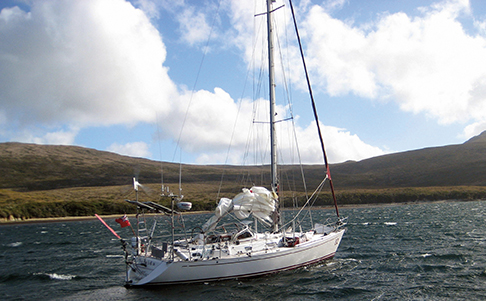
I was finally ready to sail away on March 13 with a new boom, sprayhood and staysail furler—all of which had to be shipped in, meaning expensive, lengthy dealings with Argentine customs officials. With weather deteriorating, I made an interesting stop in the (thoroughly British) Falklands, where my departure was delayed several days due to strong winds. My next route was northeast toward Cape Town as I tried to avoid the frequent deep depressions that come off the South American coast. These lows produced heavy weather that forced me to heave to a couple of times and lie to the Jordan Series Drogue for several days. Eventually, I was able to head east towards Cape Town but was headed by southeast winds as I got close, causing further delay and a lot of tacking—as had happened on my approach just over a year earlier.
My landfall in Cape Town on Wednesday May 11 was duly celebrated as a successful round-the-world voyage completed at last.
While in Cape Town and dealing with various repairs and boat projects over the Southern winter months, I received an invitation from Queen Elizabeth and Prince Philip to a Reception in December inside Buckingham Palace for “Adventurers and Explorers”! What an amazing experience.
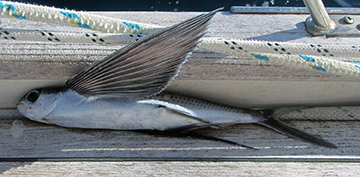
Soon after my return to South Africa, I made for Hobart, Tasmania with the usual rough weather crossing the Great Australian Bight and, thankfully, I rounded the island and made landfall just in time to avoid a major Southern Ocean storm. I’d decided to try to round the Southern Ocean’s Five Great Capes on my way back to Victoria to re-start my next nonstop solo attempt, so I soon set off again to round Stewart Island, off the South Island of New Zealand. Again, I just managed to stay just ahead of a nasty depression that was chasing me across the Tasman Sea until I passed south of Southwest Cape! The many albatross around Stewart Island were beautiful to watch. However, with weather deteriorating, I had a stormy passage north past New Zealand as I tried to make Tahiti for some more necessary repairs to my autopilot. Then, it was on to Hawaii for yet more work before making for Victoria around the North Pacific High. We arrived with a fabulous fast sail through the Strait of Juan de Fuca, and rounded Race Rock under a blue sky to finish in Victoria on August 1, 2012.
NON-STOP AT LAST
Preparations were intense over the next couple of months as I got Nereida ready for my third nonstop attempt in October. Surely, this time it would be successful! Unlike the previous start, I had a great sail down the strait with a favorable tide helping as I approached the Pacific. To my surprise and delight, I even spotted a black-footed albatross soon after rounding Cape Flattery. Things were going fine until my life raft decided to part company with the stern just a few days out. I contacted the World Sailing Speed Record Council to ask if I could replace it in San Francisco. To my relief, they replied, “Yes, so long as I kept strictly to the unassisted rules.”
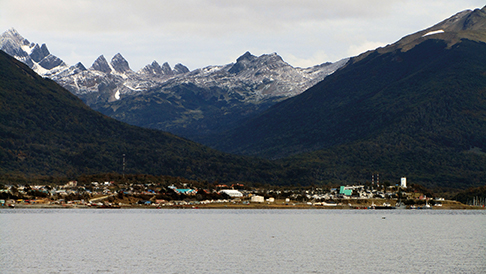
I had to fix the replacement raft and its cradle in place without help or anyone coming onboard once it had been brought alongside by friends. That went well and we continued on, as ever, under sail alone.
Problems galore kept me occupied as I headed south, although the ITCZ was negotiated nicely as we dodged major convection areas that showed up on the satellite photos downloaded from Honolulu. A shroud connection broke one night and I was able to replace it with a spare terminal. I had to make a trip up the mast to fix the non-functioning wind instrument. A winch that jammed had to be rebuilt. And, we had to heave to several times in rough weather. All of this was before Cape Horn, which was rounded close to the date of the bad knockdown of my previous rounding.
The Vendée Globe racers were also rounding the Horn at that time. Alex Thompson came within 100 miles of me as he headed towards the Horn and Mike Golding was well off to my west at that point. Friends kept me posted with the racers’ positions and Mike Golding’s team put me in touch with the race management team in Paris, who kindly sent me the same daily ice reports that were being sent to the racers. There were several large icebergs and lots of bergie bits in the area to avoid.
An especially careful watch was needed on weather, ice and routing through the eastern portion of Drake Passage. It would be only too easy to be caught out by nasty seas in bad weather, so I followed a route that passed around firstly the shoals and later the sea-mounts to the east-northeast of the Cape.
We sailed on across the Atlantic and had a good crossing this time with plenty of birds for company. We passed south of South Africa and sailed into the South Indian Ocean with lots of often-frustrating calms in between the stronger weather. The wind is either a famine or feast in the Southern Ocean, as the depressions (and cold fronts) pass by, usually every three or four days, but this time around there seemed to be far more calms with the Indian Ocean High farther south than usual. I had to keep well south at times in an effort to stay in better wind.
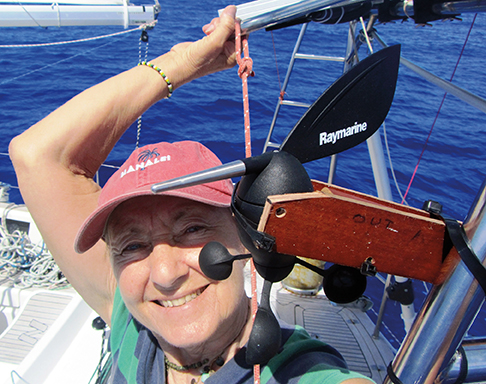
By now, I had lots of radio contacts to keep me company. There was the usual stormy weather crossing the Great Australian Bight and we got a bit of a knockdown west of Tasmania. The radar was knocked askew when the welded joint holding its support to the pole broke in the knockdown and became useless to me although still working. The heavy wind generator trashed itself after coming off its pole and swung around violently on its cable. Just to add in to the mix, the next morning the windvane’s rudder came away .
Luckily, my planned stop in the D’Entrecasteaux Channel of Tasmania for repairs turned out not to be needed since, one morning, the sea became very calm and I quickly managed to get the Hydrovane rudder back on. That avoided a power problem due to loss of wind-power, since wind vane-steering, unlike the hydraulic autopilot, uses no battery power.
To avoid forecasted strong headwinds and likely stormy conditions when heading north to the east of New Zealand, I decided to head up the Tasman Sea. It seemed like a good, sensible decision at the time but led to no end of problems later as I headed north past a myriad of atolls, islands, reefs and seamounts in unhelpful weather.
Finally, we were back in the North Pacific but too far west in the trade winds. If I could have picked up Nereida and placed her 300 miles further east, to get into the airflow around the North Pacific High, we would have been a lot better off. But, we were constantly being headed or becalmed as I tried to keep heading northeast. In fact, farther north, when due west of Vancouver Island, the usual high was replaced by a large low pressure system that tracked southeast from the Aleutians. Unbelievably, we were right in its center with no wind!
For the last two months, I was helped by several ham radio friends, who set up a voice/radio email system after I lost all use of my onboard computers. With their unstinting help, over 1,000 emails were dealt with by daily HF radio contact and my daily website blog and position reports were maintained. With no GRIB files available, weather information was mainly gained from weather faxes received using an old-fashioned dedicated fax receiver with its own antenna and paper print-out. This was the plan B I had installed precisely for such a situation. My days became ruled by alarms that were set so as not to miss a voice radio schedule or a weather-fax transmission.
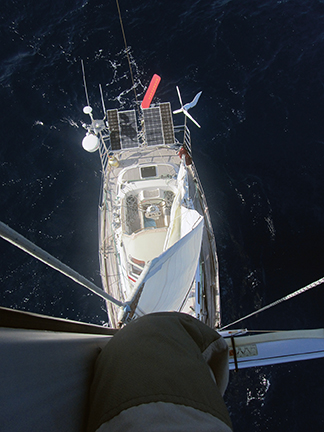
I got very excited one day as I approached the finish to be greeted by a Canadian Coast Watch plane that circled around and spoke to me over VHF. But even at the end, it felt as though fate was laughing at us. We were becalmed in fog off the Juan de Fuca Strait as a procession of cruise ships passed close by during the day. It was foggy and windless overnight. We had light wind the next day, only to be becalmed again overnight between the shore and shipping lanes. We were at the mercy of the tide as we drifted in circles and often backward! I had to stay awake at the chart table or wheel all night.
Finally, on the afternoon of Sunday July 7, it looked as though we’d make it. We had a good sail to Race Rock but a dying wind again as I came around it and headed north towards Victoria. There was a glorious sunset and I was greeted by friends in boats who came out from the harbor, with landfall seemingly imminent. But I had zero knots on the speedo as darkness fell. Unbelievable!
Near midnight, a slight breeze came up that was just enough for us to drift oh-so-very-slowly towards the bright lights of Victoria, not so very far away.
“Keep to the west or the current will take you and you’ll miss the harbor entrance…” came the advice over the VHF.
Patience, patience. It was great finally to drift over the finish line off Ogden Pt. Cheers erupted from the boats and breakwater where a group of friends were enthusiastically waving light sticks and flags despite it being almost 2.30 a.m.
The big Prince of Whales RIB came alongside and tied up to us. Friend and Ocean Cruising Club Port Officer Ian Grant came on board. The mainsail was lowered and I just sat there, doing nothing but grinning with delight and chatting to friends, sipping champagne that was handed to me. The towboat was gently taking me to a berth in front of the Empress Hotel for the night.
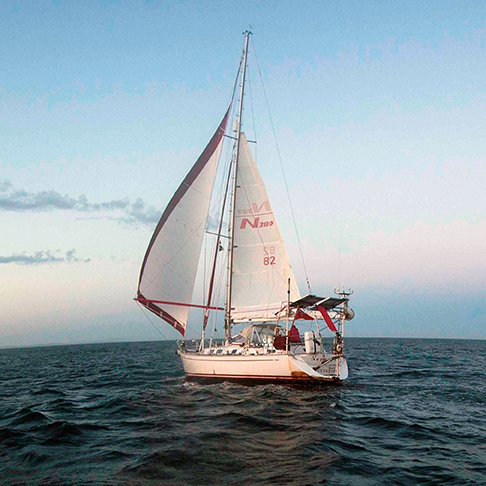 We’d finally made it! On July 8, 2013 after almost 260 days at sea and well over 25,700 miles I became, at 70 years old, the oldest female sailor to complete a non-stop solo circumnavigation and the first woman to circumnavigate solo and nonstop from Victoria. In fact, I was the first woman to do so from any point in America.
We’d finally made it! On July 8, 2013 after almost 260 days at sea and well over 25,700 miles I became, at 70 years old, the oldest female sailor to complete a non-stop solo circumnavigation and the first woman to circumnavigate solo and nonstop from Victoria. In fact, I was the first woman to do so from any point in America.
Jeanne Socrates is a British grandmother from Ealing, a western suburb of London. She sold her family home to take up the challenge of completing a non-stop solo circumnavigation after the death of her husband, with whom she learned to sail in her 50s. Jeanne is fundraising for the Marie Curie Cancer Center.
















